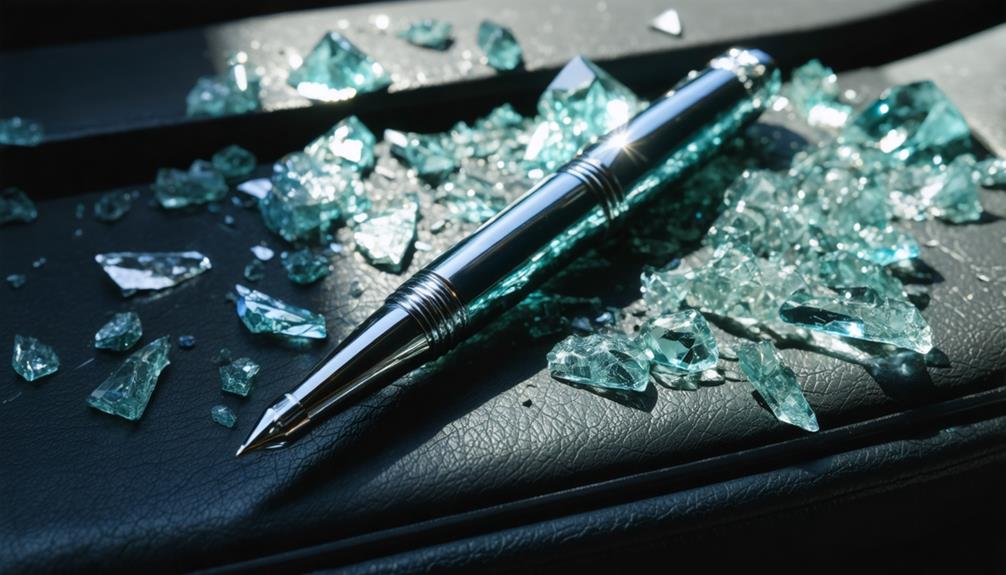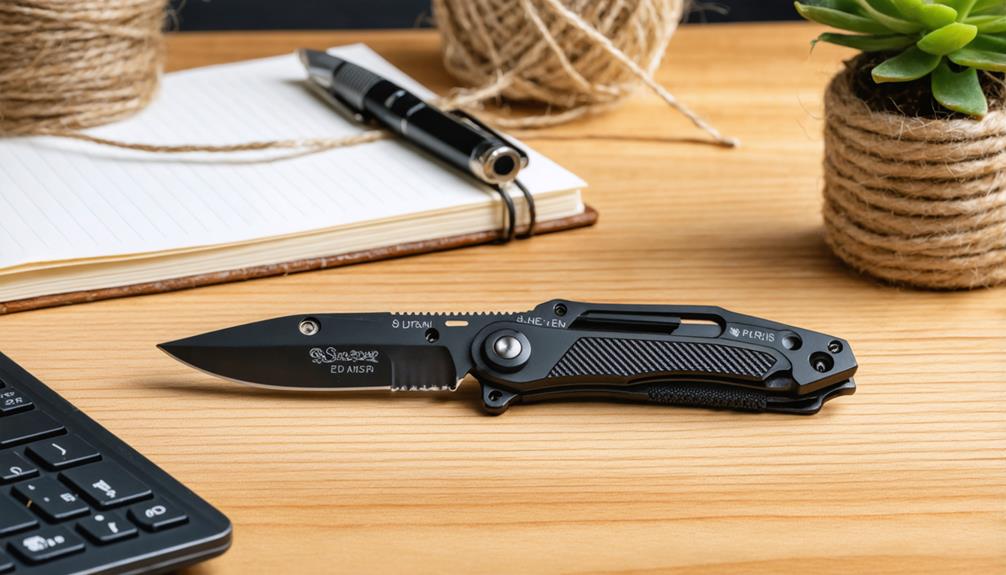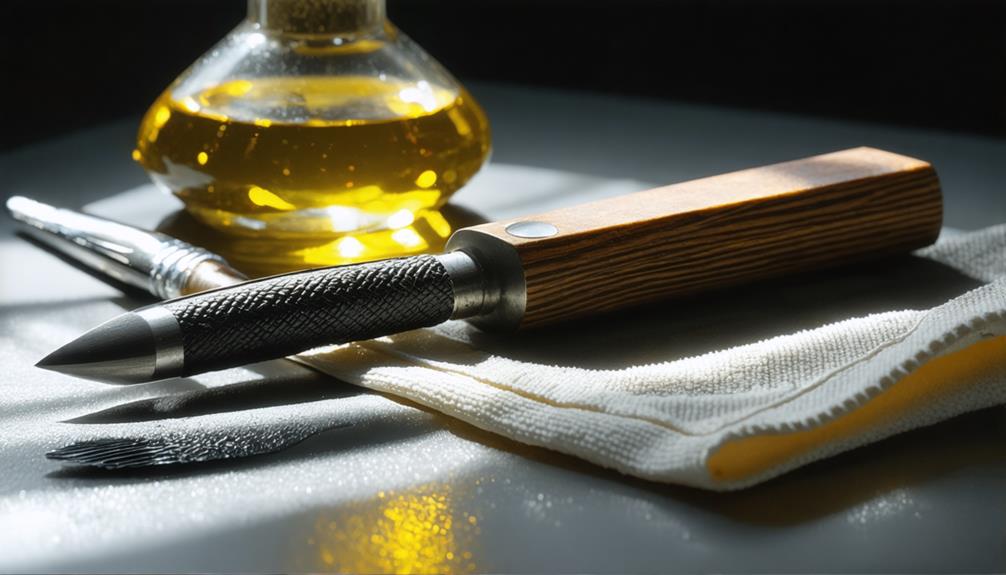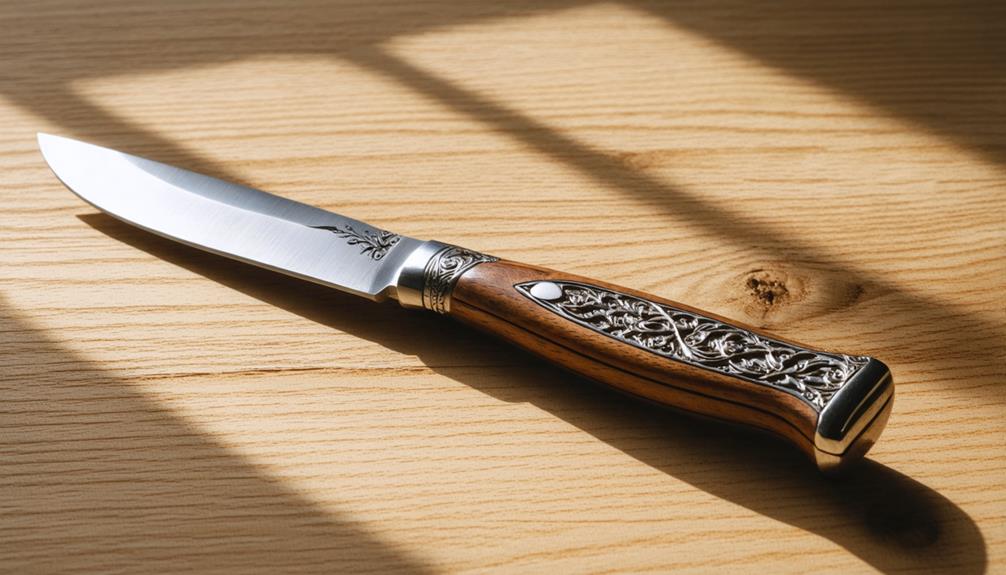
Brainstorm Security Shop

For Orders Over $199

On Any Of Our Products

Details On Refund Page
The pen knife, a tool steeped in history since the 15th century, serves as a testament to human ingenuity and adaptability. Initially crafted for sharpening quills, it has evolved into a multipurpose instrument essential for various contemporary tasks. From the Renaissance, where it symbolized literacy, to its current applications in crafting and outdoor settings, the pen knife’s design emphasizes precision and versatility. Its enduring popularity raises intriguing questions about the balance between tradition and innovation in tool-making. What makes this seemingly simple tool so indispensable across different eras and applications?
The pen knife, a small folding pocket knife, traces its origins back to the 15th century, a time when quills were the primary writing instruments. Its primary function was to trim and sharpen quills, making it an indispensable tool for scribes and scholars.
The historical significance of the pen knife is underscored by its role in the proliferation of written communication—an essential component of cultural and intellectual advancement during the Renaissance. As literacy spread across Europe, the pen knife became a symbol of education and literacy, reflecting the societal shift towards documented knowledge.
The pen knife’s journey through history is marked by intriguing cultural variations. In England, it gained popularity among gentlemen as both a utility tool and a status symbol, while in France, it evolved to serve more decorative purposes, often adorned with intricate designs.
The Japanese adopted similar folding mechanisms in crafting their own knives, emphasizing precision and craftsmanship. These regional adaptations highlight the pen knife’s versatility and enduring appeal.
Today, while its original purpose has diminished, the pen knife remains a testament to human ingenuity and a historical artifact cherished by collectors and enthusiasts worldwide.
Renowned for its practicality and compactness, a pen knife is characterized by several key features that enhance its utility. Central to its design is the choice of blade materials, which often include stainless steel or carbon steel. Stainless steel is favored for its resistance to rust and corrosion, making it ideal for users seeking minimal maintenance. On the other hand, carbon steel offers superior edge retention, appealing to those who prioritize sharpness and cutting efficiency. The selection of blade material directly impacts the knife’s performance and longevity, underscoring its significance in the overall design.
Equally important is the handle ergonomics, which play a crucial role in user comfort and control. Handles are often crafted from robust materials such as wood, synthetic composites, or metal alloys, each offering distinct tactile experiences.
The ergonomic design ensures that the pen knife can be used effectively over extended periods without causing discomfort or fatigue. A well-contoured handle not only enhances grip but also provides balance, allowing for precise maneuverability.
These thoughtfully integrated elements in both blade and handle construction are what set pen knives apart, ensuring they remain a timeless tool in personal and professional settings.

Incorporating a pen knife into daily routines unlocks a myriad of practical applications, making it an indispensable tool for various tasks. As a versatile crafting tool, pen knives are ideal for precision cutting, shaping, and trimming, facilitating creative projects ranging from paper art to model making.
Their compact size allows for meticulous detail work, making them an essential component in the toolkit of any artisan or hobbyist.
Beyond crafting, pen knives serve as vital outdoor essentials. Whether embarking on a camping trip or a simple hike, they prove invaluable for tasks such as preparing kindling, opening packages, and even food preparation.
The resilience and multifunctionality of pen knives provide users with a sense of preparedness in the wilderness.
Moreover, pen knives have self-defense applications, offering a discreet means of protection. While not a substitute for professional defense tools, they can serve as a last-resort option, providing peace of mind in uncertain situations.
Selecting the ideal pen knife hinges on understanding your specific needs and preferences. Whether for everyday tasks, outdoor adventures, or precision work, the choice of pen knife can significantly impact its functionality and durability.
One must consider blade materials, as these influence the knife’s sharpness, strength, and resistance to corrosion. Common options include stainless steel, known for its rust resistance and low maintenance, and carbon steel, favored for its superior edge retention and sharpness.
Equally important is the folding mechanism, which affects the knife’s safety and ease of use. The slip joint mechanism is traditional, relying on friction to keep the blade open, suitable for light tasks. Locking mechanisms, such as liner locks or frame locks, offer enhanced safety by preventing accidental closure during use. These are particularly beneficial for more demanding tasks where blade stability is crucial.
Additionally, ergonomics should not be overlooked. A well-designed handle ensures a comfortable grip, reducing fatigue during extended use.
Considering these factors will guide you in selecting a pen knife that not only meets your functional requirements but also aligns with personal preferences, ensuring a reliable and efficient tool for various tasks.

Taking care of your pen knife is essential to ensure its longevity and optimal performance. Regular maintenance not only preserves the blade’s sharpness but also prevents rust and wear.
One of the fundamental cleaning techniques involves using a soft, damp cloth to wipe away dirt and debris after each use. For more thorough cleaning, disassemble the knife according to the manufacturer’s instructions and carefully clean each component with mild soap and water. Ensure all parts are completely dry before reassembling to prevent moisture-related issues.
Sharpening methods are equally crucial for maintaining a keen edge on your pen knife. Utilize a whetstone or sharpening rod, starting with a coarse grit and progressing to a finer one. Hold the blade at the manufacturer’s recommended angle, usually between 15 to 20 degrees, and apply even pressure while drawing the blade across the stone.
Regular honing with a leather strop can also help maintain the edge between sharpening sessions.
Additionally, lubricating the pivot and other moving parts with a drop of quality oil will ensure smooth operation. By adhering to these cleaning techniques and sharpening methods, your pen knife will remain a reliable tool for years to come.
The legality of carrying knives in public varies significantly by jurisdiction. Pen knife regulations often consider factors such as blade length and intent. Self-defense considerations may influence permissible use, but compliance with specific local laws is essential.
Airport security adheres to strict travel regulations, prohibiting the carrying of sharp objects in carry-on luggage. Therefore, such items must be stored in checked baggage to comply with aviation safety protocols, ensuring a secure travel environment.
Blade materials in manufacturing processes often include stainless steel, carbon steel, or titanium. These materials are selected for their durability, corrosion resistance, and ability to retain sharpness, ensuring the blade’s effectiveness and longevity in various applications.
The primary distinctions between pen knives and traditional pocket knives lie in their design variations and practical uses. Pen knives typically feature smaller, more delicate blades, tailored for precision tasks, whereas pocket knives often have larger, multipurpose blades.
Collectible items with historical significance often attract antique collections, including certain pen knives. These pieces may possess unique design features or provenance that elevate their value and appeal to collectors focused on acquiring historically significant artifacts.
In conclusion, pen knives have long been valued for their practicality and versatility, with a rich history that highlights their evolution in design and function. Key features, such as a versatile blade and durable construction, allow for a wide range of practical applications, from simple cutting tasks to more complex tasks. Selecting the right knife requires careful consideration of individual needs and preferences, while proper maintenance ensures longevity. Understanding these factors allows for optimal performance in everyday tasks.
